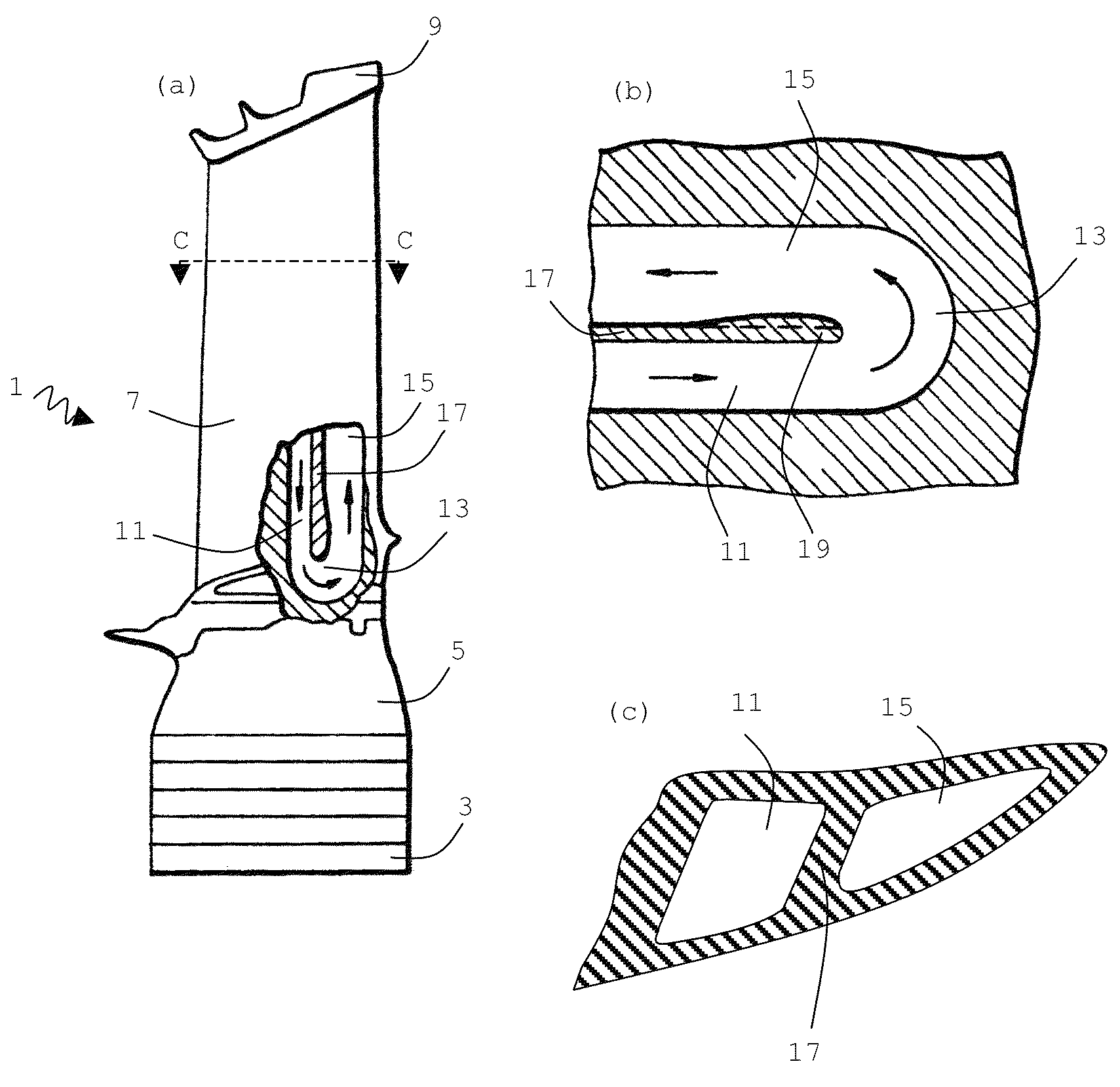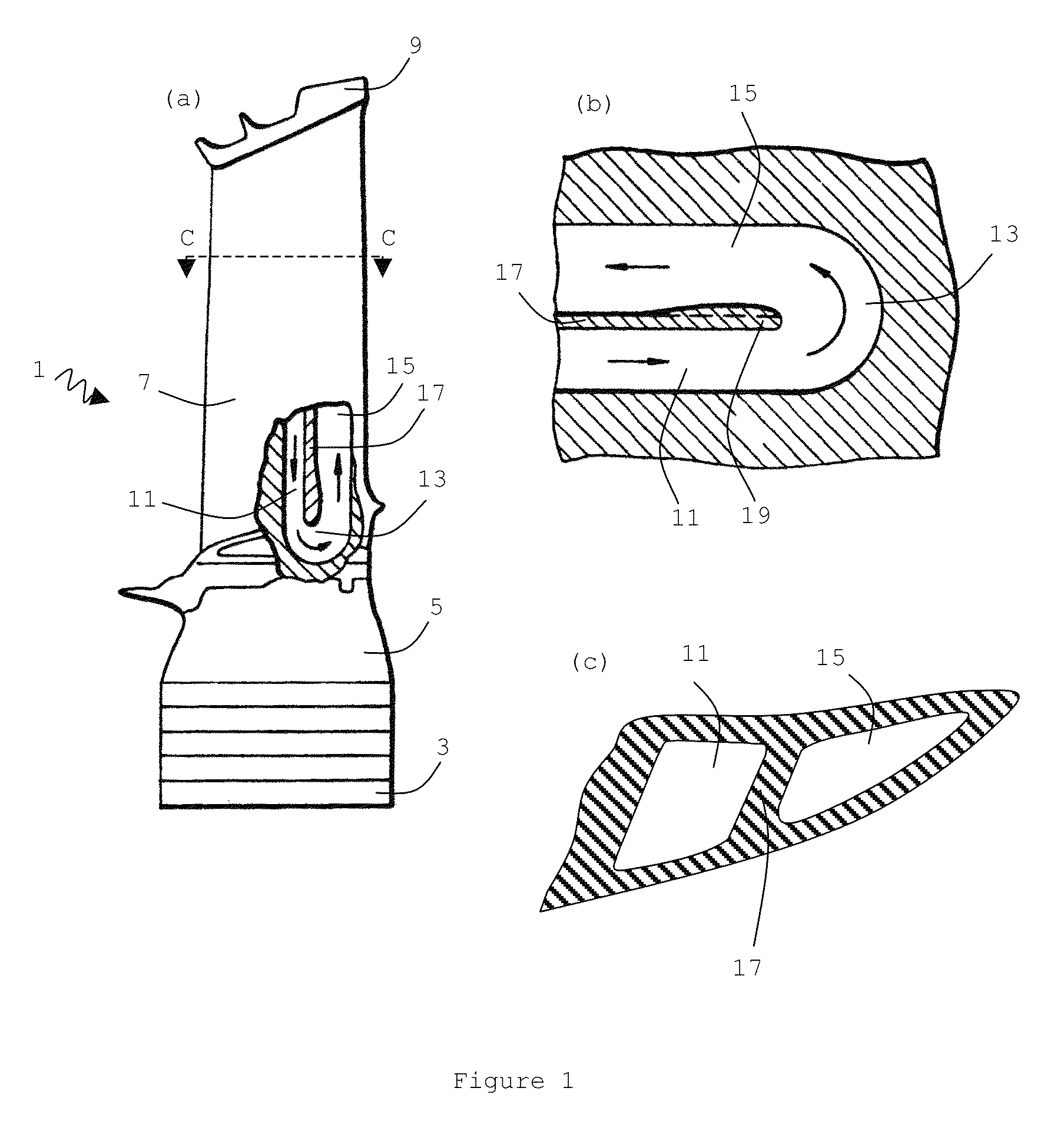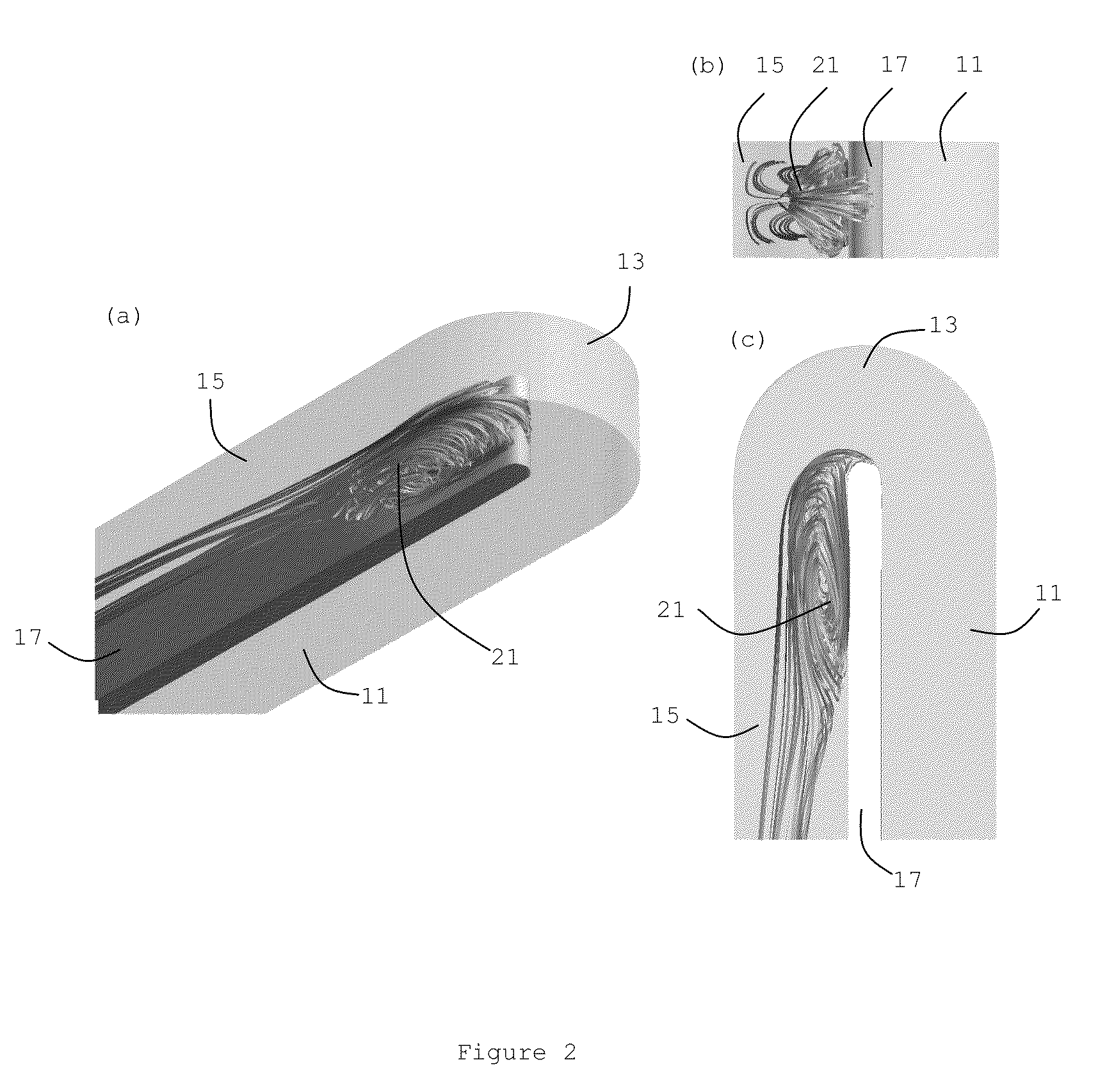Cooled aerofoil blade or vane
a technology of aerofoil blades and blades, which is applied in the direction of liquid fuel engines, vessel construction, marine propulsion, etc., can solve the problems of pressure drop, particularly large, and difficulty in reducing pressure, so as to reduce the strength of vortices, reduce the thickness of dividers, and reduce the effect of momentum
- Summary
- Abstract
- Description
- Claims
- Application Information
AI Technical Summary
Benefits of technology
Problems solved by technology
Method used
Image
Examples
Embodiment Construction
[0033]FIG. 1(a) shows a conventional aerofoil blade 1 for the high pressure turbine of a gas turbine engine. The blade is mounted with a plurality of similar blades on the periphery of a disc which rotates within the gas turbine engine. The blade comprises a root portion 3 for attachment to the disc. A platform 5 is located radially outward of the root portion, and an aerofoil portion 7 is located radially outward of the platform. A shroud portion 9 is located on the radially outmost extent of the aerofoil portion. The shroud and platform serve to define a portion of the turbine gas passage in which the aerofoil portion is located. Since the gases which flow over the aerofoil portion are usually at very high temperature, the aerofoil portion has interior passages through which a coolant, typically air, can circulate. The air flows through the passages before being ejected from the blade. The arrows show the direction of flow through the passages.
[0034]In order to cool the blade effe...
PUM
 Login to View More
Login to View More Abstract
Description
Claims
Application Information
 Login to View More
Login to View More - R&D
- Intellectual Property
- Life Sciences
- Materials
- Tech Scout
- Unparalleled Data Quality
- Higher Quality Content
- 60% Fewer Hallucinations
Browse by: Latest US Patents, China's latest patents, Technical Efficacy Thesaurus, Application Domain, Technology Topic, Popular Technical Reports.
© 2025 PatSnap. All rights reserved.Legal|Privacy policy|Modern Slavery Act Transparency Statement|Sitemap|About US| Contact US: help@patsnap.com



